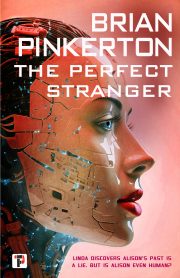Gamifying Your Writing Goals
By Gideon P. Smith
We all have writing dreams, but they often remain dreams without solid productivity goals to turn them into reality. Unfortunately, as with adhering to the Prime Directive or making the Kessel Run in under 12 parsecs, most quickly fail.
Many systems have been proposed to help us succeed. SMARTER goals is a helpful project management tool that helps us design measurable goals, and James Clear’s Atomic Habits suggests using routines to make them stick. But neither of these approaches tricks our brain into wanting to do the work. This article reviews how combining ideas from neuroscience research, lessons from addiction medicine, and new ideas on “engagement” from video game design can enhance our writing productivity.
Strategies Based in Psychology
Too many failures at any task demoralize us and make us give up. However, too many successes can also be bad for keeping us interested. While counterintuitive, this occurs because the wins are not rewarding enough. We need a little failure and struggle to trigger a satisfying dopamine release with success.
In the early 2000s, psychology researchers reported identifying a universal “ideal” 3:1 ratio of positive to negative feedback, or success to failure, below which people stopped trying, and a 6:1 ratio, which reportedly identified peak performing finance teams and divorce-proof marriages. Productivity experts immediately recommended tuning targets to hit these ratios.
However, problems with the researchers’ underlying mathematical assumptions called into question the universal validity of such ratios. Fortunately, using lessons from video game and app design, we can now take advantage of the psychological strategy of optimizing outcomes by correctly balancing success and failure.
In many successful apps, if you do not use the app for a few days, when you return, it lets you win the first game. It wants you to remember how much fun it was to play. After allowing a few easy wins, the game increases the difficulty.
The key here is that apps focus on engagement. As Robert Heinlein said in his five rules for writing, “You must write.” The rest of the equation turns out to be maximizing targets based on engagement.
If we define:
Writing engagement = [Number of completed writing sessions (whether or not you hit your goal)] / [Number of writing sessions planned] x 100%
We can adopt a strategy in which, if your engagement over five consecutive sessions is 100 percent, you increase the difficulty of your session target by 10-20 percent (e.g., from 250 words to 300). If your engagement drops, however, you immediately drop to the prior target, and the next time you hit 100 percent over five sessions, you increase your target again, but by less.
This approach maximizes your daily target without sacrificing engagement. We want this, because total productivity is a product of both.
The good news is video games have even more to teach us. They’ve also developed successful ways to enhance engagement.
Continuous Rewards
Rewards are a proven technique to enhance goal-achievements. However, we often give ourselves rewards only at the end. Apps have demonstrated that ongoing continuous reward-point accumulation is a superior incentive tool. Noting this, businesses like Starbucks and Domino’s Pizza have changed their loyalty programs so that you accumulate points continuously, allowing you to choose when and how many points to cash in for different levels of reward. This also allows you to reward yourself when you most need it.
There are many ways to implement this in writing. For example, if every word written counts as a point, you could set rewards as 1000 points for chocolate or 1500 for calling a friend.
Streaks
Marking a big red X on the calendar every day you write incentivizes you not to break the streak. The longer the streak runs, the more effective this is. The problem with such traditional streaks is that it only requires one failure to break the streak, and psychologically, this is highly demotivating. Studies demonstrate consistently longer breaks, or even complete abandonment of goals, once a streak is broken.
There are several ways games and apps have updated the traditional approach:
- Some use “get out of jail free” cards. Language-learning app Duolingo allows you to maintain your daily streak, even if you take a weekend off, by using points to buy a “holiday.” This also incentivizes over-target productivity to accumulate points and earn breaks.
- Many design the streak to be easy. For streak maintenance, too easy (low word counts, weekly) is always better than too hard (daily).
- Many utilize multiple parallel streaks, so even if you fail one, the other keeps you engaged (e.g., daily and weekly streaks).
Using Power-ups to Enhance Adaptive Difficulty
In video games, rather than making the level “easier,” the app sometimes gives you free lives or an unexpected power-up. You can adopt these same strategies. Instead of cutting your word-count target, allow yourself to jump to writing a more interesting part, or count words written on another project this session.
Staged or Timed Bonuses
Time-limiting bonuses (e.g., your “unlimited lives” expire in 30 minutes) encourage you to stay playing. But you can take advantage of these in writing to counter other life pressures. If Wednesdays you work late, perhaps Wednesdays have ‘double points’ on all words written, anyway. You might find Wednesdays become your most productive night!
Social Connection and Competitions
Apps often have “side quests,” promoting social connection or team playing. Studies in addiction treatment suggest that social support and accountability significantly increase the likelihood that participants will remain sober and relapses will be shorter.
In writing, social or group participation as a “side goal” can lend similar resiliency to your engagement.
Group competitions are widely used in apps, since this allows your participation to be catalyzed by others’ achievements. For writing, the easiest parallel is participating in writing sprints, which can be used in both competitive and non-competitive ways.
I hope these ideas give you some additional tools. If you have a favorite app or video game, think about how it reels you in and see if you can adapt that to your writing goals. Good luck making your writing goals stick.
 Gideon P. Smith, MD PhD MPH, is a writer of speculative fiction and writing craft, a board-certified physician, a medical researcher with over 100 scientific papers published, and an executive coach. Gideon has written for SFWA, BSFA Focus Magazine, Wyldblood Magazine, Troopers Quarterly, anthologies from Black Hare Press, Shacklebound Books, and Fairfield Scribes, and is a first reader for the speculative magazine Cosmic Roots and Eldritch Shores. For more information visit www.gideonpsmith.com or follow Gideon on X @gideonpsmith.
Gideon P. Smith, MD PhD MPH, is a writer of speculative fiction and writing craft, a board-certified physician, a medical researcher with over 100 scientific papers published, and an executive coach. Gideon has written for SFWA, BSFA Focus Magazine, Wyldblood Magazine, Troopers Quarterly, anthologies from Black Hare Press, Shacklebound Books, and Fairfield Scribes, and is a first reader for the speculative magazine Cosmic Roots and Eldritch Shores. For more information visit www.gideonpsmith.com or follow Gideon on X @gideonpsmith.


